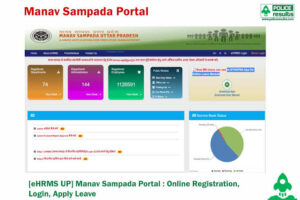How to Rank Website without Backlinks For SEO

If you’ve tried link building, you know it’s really hard to do, but they say it’s a vital thing that you need if you want to rank for thousands of keywords. Now, I want to go over three main strategies that’ll help you How to Rank Website without Backlinks , SEO Tips.
First Strategy
The first strategy is what I like calling the land and expand strategy and very much vital for ranking website without backlinks. In other words, you already have keywords and pages that rank on Google. They may not rank as high as you want, they may not rank for as many popular key terms as you want, but they rank for something.
The way you see this is you log into Google Search Console. Once you log into Google Search Console, they show you all the pages and the terms that each page ranks for.
I want you to click through on one of those pages and look at all the keywords that that page ranks for. From there, I want you to go back to the article on your site and see, all right, what other terms that this article is showing in Google Search Console, for keywords that I’m already somewhat ranking for, what are those terms, which one of them am I not including in my content?
Try To Know Google’s algorithm
In other words, think of it this way, the way Google’s algorithm works is if you have text on your page around a topic, you’re naturally more likely going to rank for those key terms. But if you’re ranking for some terms and you don’t have those words in your website copy, in the text, what do you think that tells Google?
Hey, yeah, we should rank them, but maybe not as high. If you add those keywords within your copy, you’re much more likely to rank higher from them.
So I want you to go through the whole list of keywords that you’re getting impressions and clicks for, but not as many as you could.
You go through your article and make sure the article expresses or covers all of those key terms. Don’t just shove them in, you’ve got to naturally want to cover those terms.
At the same time, what you should be doing is taking the most popular terms that you rank for, putting them into Ubersuggest or SEMrush which is paid tool but you can use SEMrush for free and you’ll get a longer list of other long tail phrases. If you rank for a head term, the chances are it’s really easy for you to also rank for the long tail phrase as well, because the head term is always usually more competitive, from a rankings perspective,than a long tail phrase.
So by including those other long tail phrases that is not in your article currently, you’ll also find that by leveraging the land and expand strategy, you’l l start ranking for more and more terms, and articles that are already getting somewhat traffic from Google.
Second strategy
The second strategy for you is content clusters, all right? So, you’ve got these pages on your site. Now, this strategy and this tactic is all about layout and architecture.
So with content cluster,you got pages on your site. I want you to create master pages, main pages, higher goal pages that are on one specific topic. So, for example, I may have a page that’s just dedicated to SEO, it’s a broad, large term. Then from there, I may link out from that main SEO page to all the other phrases and terms and subjects around SEO.
Now, the way you figure out what other phrases to link out to is you can use a tool called Answer The Public.
Answer The Public
Answer The Public, you put in a head term, it shows you all the long tail variations of that term that people are talking about. These are questions,these are comparisons, these are propositions. And by creating pages on all the popular ones, what you’ll find is you can start getting more traffic.
Now, that main page, that SEO page, whatever that main topic is, dog food, SEO, you pick that main parent topic.
That page needs thorough content, needs a ton of information,pictures, videos. In other words, you got to make it amazing. You can’t just say this page is on dogs, here’s five words.
Assuming it’s amazing, you go above and beyond, your page is more thorough and detailed from all the other pages that already rank in the top 10 for that term. Then, by using the strategy of the content clusters and going to tools like Answer The Public, and going and finding out all the other terms that you could end up ranking for that are around that topic using questions and answers,prepositions, comparison, creating content around it, and then linking to those articles from your main page, what you’ll find is they’ll all start ranking higher and you’ll start ranking for thousands and thousands of other terms.
Third strategy
The last strategy I have for you is content gaps. There is content that your competitors talk about that you do not talk about. There’s terms that you rank for that your competitors also don’t rank for.
That’s just how the web works. So, using Ubersuggest or ahrefs I want you to put in a competitors URL. Then go to top pages. Top pages shows you all their most popular pages that they rank for and the terms that they rank for.
Then I want you to download all of this information by exporting this data into a CSB, and this will help you determine, all right, here are the pages that my site talks about but my competitors also talk about, and here are the pages that my competitors talk about that I don’t talk about.
Take all the pages that they talk about that you don’t and delete the rest. Now you have a list of topics that your competitors are talking about, they’re ranking for, that you want.
Now I want you to go back to Ubersuggest, go to those pages, analyze them, see who links to them, see the key words that they’re ranking for, and now I want you to start creating better pages, on those same topics , than your competition.
Data Collection
Once you have that data,write that article, you release it on your site, I want you to go back and email all of the people that have linked to your competition, because in the Ubersuggest 200 top pages it shows you who linked to them.
Now, you don’t need to hit these people up and get them to link to you because, as we all know, the more you hit up people and ask them to link to you, sure, a portion will link to you, but the majority will not. But, instead, I want you to shoot them a simple email.
Hey John, I noticed you linked to X, Y and Z article. I have one that just got published, mine covers A, B and C that theirs didn’t. You can check it out here. If you like it feel free and share it. By doing this you’ll get a lot more social shares.
People are much more receptive to sharing on Twitter or Facebook, any of those social sites. As you get these shares,what you’ll find is your articles will be seen by more people, some of them may even link to you naturally, but in general, you’ll start ranking for extra terms that you weren’t before.
So if you follow all those three main strategies, you’ll start ranking for thousands of keywords without building links. And if you want to get advanced, start combining them.
So, for example, when you’re leveraging things like content clusters, and you find that some of these clusters are ranking, I then go back in and use a land and expand strategy on those individual pages.
When you do all of that,that’s how you can rank for not just thousands, but hundreds and thousands of keywords without building links.
Conclusion
So this is how you can rank your website without even making backlinks . I would like to add on that , time you take to build your backlinks and indexing them , you must utilize that time in following these strategies.






